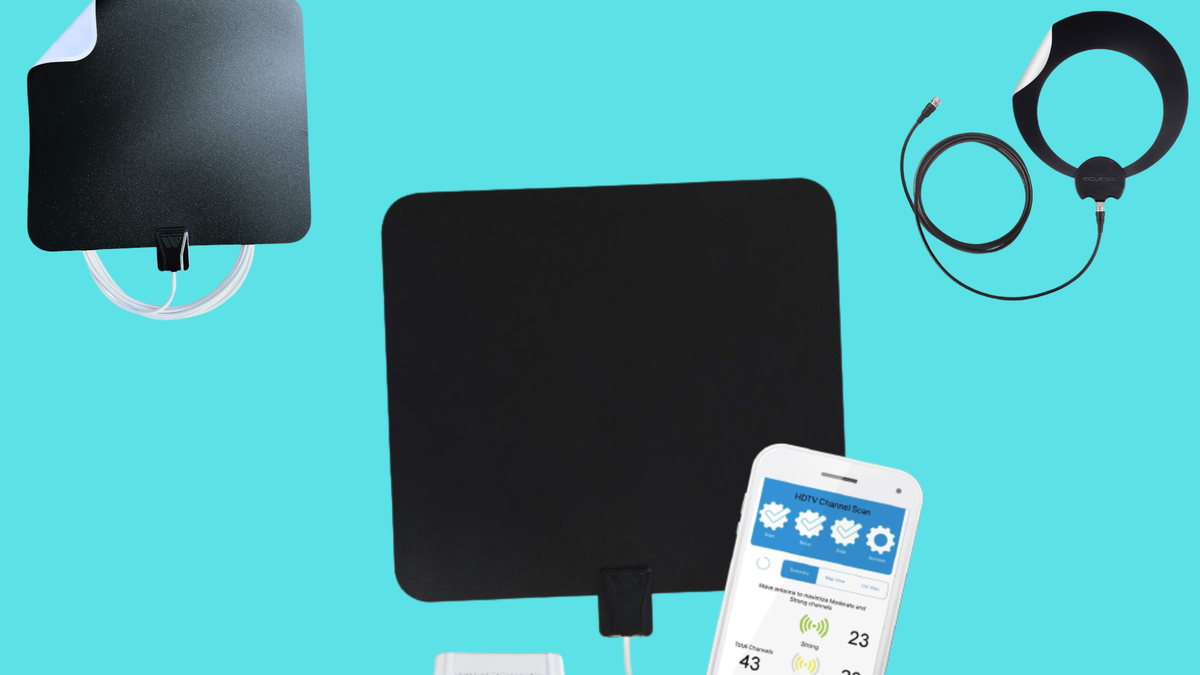These Indoor Digital TV Antennas (Probably) Really Work

Nobody wants to screw over the cable companies more than I do. When Comcast nearly doubled my rate a few years ago, I decided it was time to ditch the set-top box and try something else, which led me to digital antennas.
The digital antenna idea sounds great. You say goodbye to your monthly bill and, using a small box, get access to OTA (over-the-air) broadcasts that are streamed in high definition (1080). If you just want access to local networks and news, this probably sounds amazing. If you grew up with a real TV antenna (I did), digital technology promises a different experience. But promises and reality are not the same thing.
Do digital TV antennas really work?
Ehhh. While older analog antennas could work to some extent (even if that meant a fuzzy, static-filled picture), digital signals are pretty much all (crystal clear HD picture) or nothing (choppy, pixelated still frame or just a black screen). One thing is clear: if you want your antenna to truly perform reliably, several factors must be met. A good long range antenna helps, a little knowledge about calibration helps, but to some extent you live where you live and line of sight to the broadcast tower is not something you can really change. Most people who use digital antennas have varying levels of success.
Personally, I tried more and more expensive antennas and all sorts of amplifiers before I decided I didn’t want to constantly have to adjust in the middle of the Super Bowl or the season finale of my favorite TV show. (Thankfully, we now have more options for watching live TV, so you’re not tied to your cable company.) That said, if you want to try free broadcast signals, here’s what to look for.
What to Expect from the Best Digital Antennas
If you’re going to try the OTA route, experts seem to agree on a few pieces of advice: Your antenna shouldn’t be hidden behind a bookcase, it’s best placed near a window or outside, and you should plan to spend more. to get the best antenna you can, preferably with a gain function. How much more? Well, even the most expensive antennas cost less than $150. Here are some to consider.
Antennas ClearStream Eclipse Direct TV Antenna
It’s a removable antenna, and you can choose black or white so you don’t end up with a giant black spot on your window. It has a shorter range than other antennas, but has good performance and is much cheaper. Reviewers note that the shape of this antenna (round) means it receives UHF signals better.
Price: $39.99. Maximum range: 35 miles. Gain: yes. Size: 10.1 x 8.6 x 0.04 inches.
Buy the ClearStream Eclipse Antenna on Amazon ($40).
Winegard Flatwave Amped Pro HDTV Indoor Antenna
Based on every review, Winegard owns the antenna space and two of their models exceed the recommendations. Although the results are similar, I recommend the Amped Pro TH-3000. While it’s a little more expensive than the similar model below, it has additional smart features, and the real bonus is that the app helps you set up and calibrate the antenna. As someone who has gone through this trying to get a reliable signal, you will really appreciate this benefit.
Price: $109.99Number of Channels: 36Max Range: 60 miles Gain: YesSize: 12x.06×13 inches
Buy Winegard Flatwave Amped Pro on Amazon ($109).
Winegard FL5500A FlatWave Amped Digital HD Indoor Amplified TV Antenna
This Winegard model, like its more expensive sister, is paper thin, which means it’s easy to install. It has a slightly shorter range, and that may affect how many channels you’ll actually receive, but considering it’s half the price of the smart model, you might not care.
Price: $59.99Number of Channels: 36Max Range: 50 miles Gain: YesSize: 12x.06×13 inches